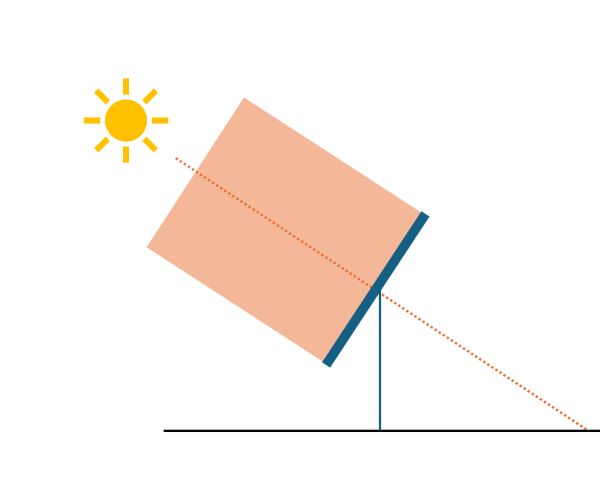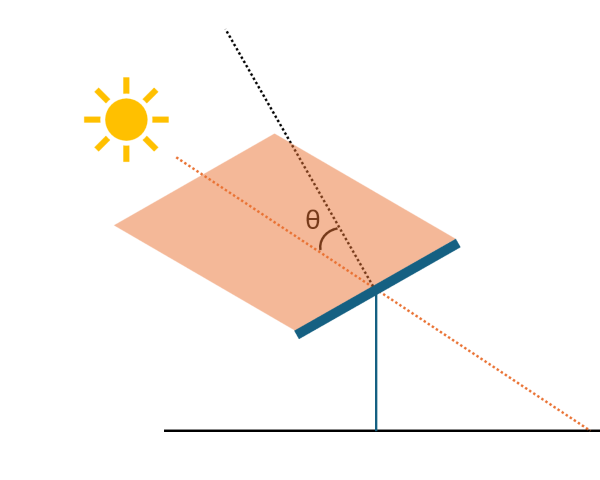Cosine Effect
In photovoltaics, the cosine effect also referred to as cosine error refers to the irradiance lost for a given PV orientation compared to the optimal orientation (perpendicular to the sun), which is proportional to the cosine of the angle between the sun's rays and the surface's normal (\(\theta\)).
| Figure 1 | Figure 2 |
|---|---|
 |  |
The incident solar power on a photovoltaic (PV) module is maximized when the sun's rays are perpendicular to the module's surface (figure 1). As the angle between the sun's rays and the module's normal increases, the effective area exposed to the sunlight decreases, leading to a reduction in the incident power. This reduction is directly proportional to the cosine of this angle (figure 2).
The power (\(P\)) received by a surface from a light source can be expressed as:
Where:
- \(P\) is the power received (in Watts)
- \(I\) is the solar irradiance (power per unit area, in W/m²)
- \(A\) is the area of the PV module (in m²)
- \(\theta\) (theta) is the angle of incidence, which is the angle between the sun's rays and the normal to the PV module's surface.